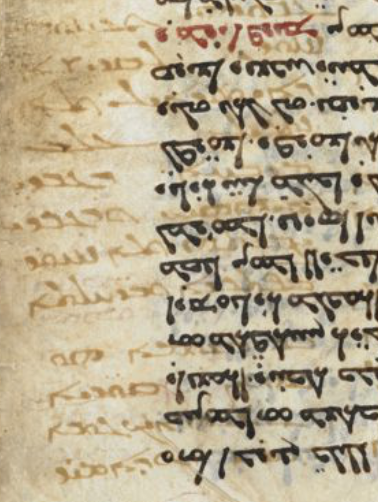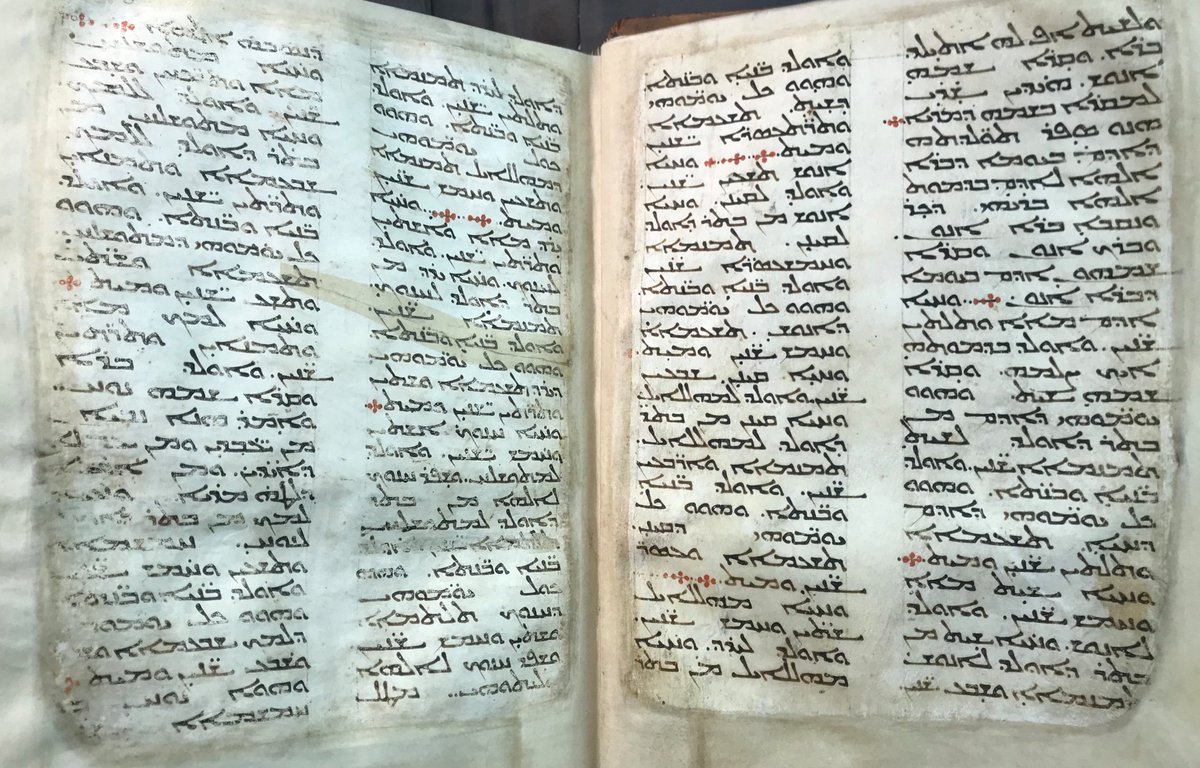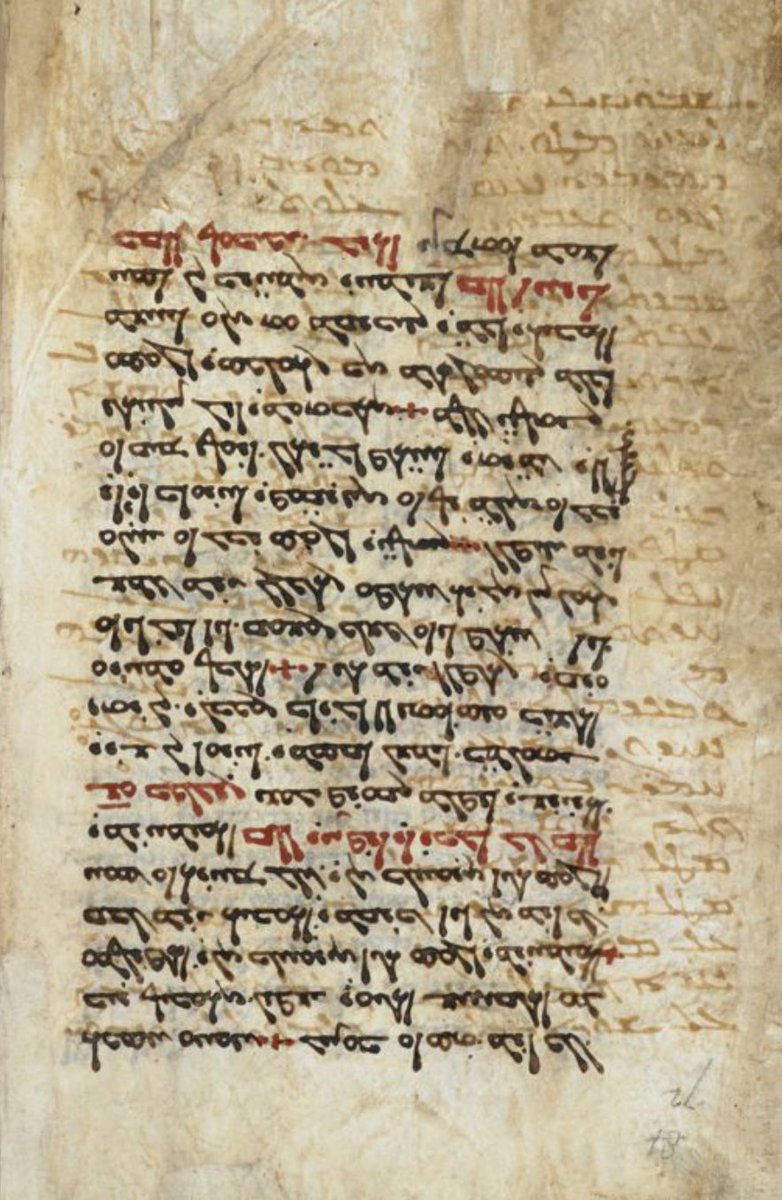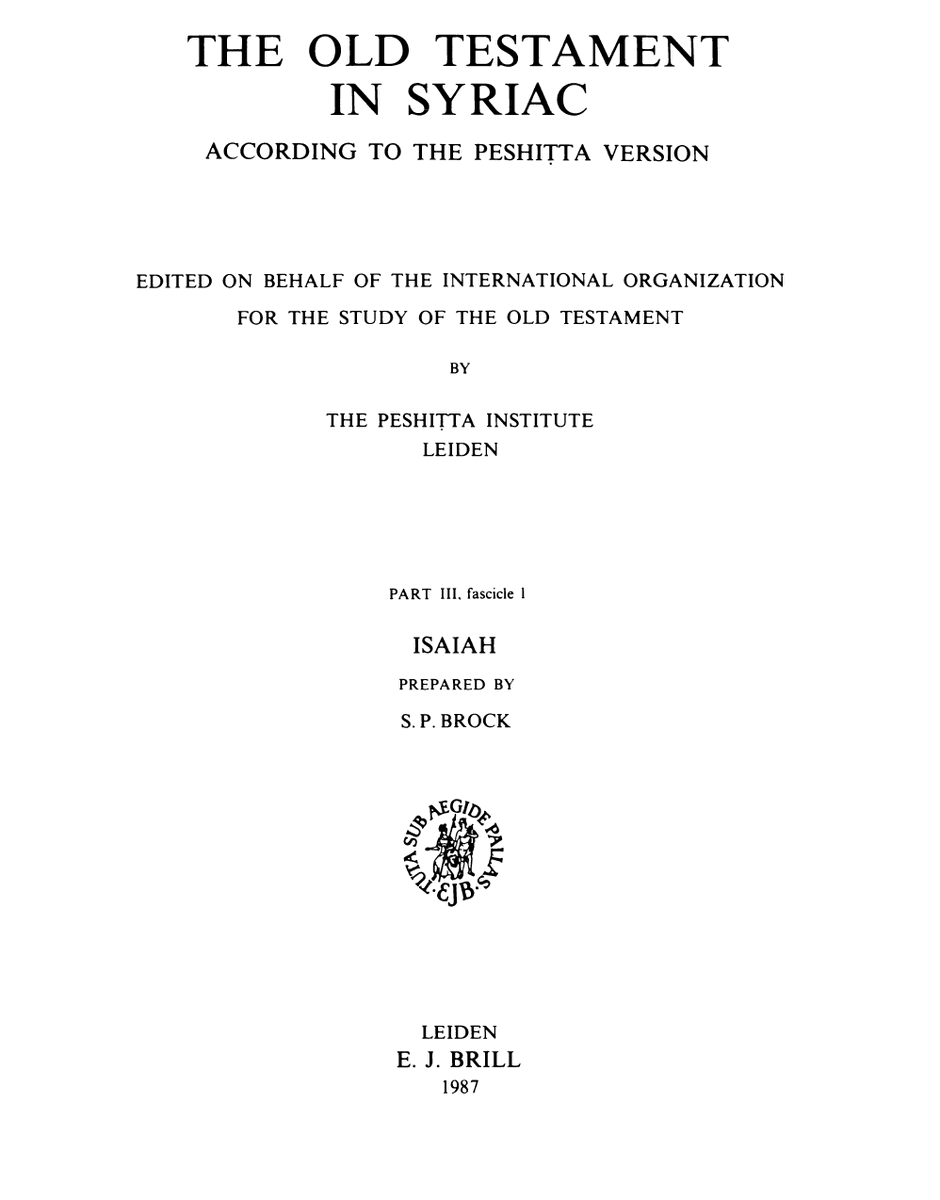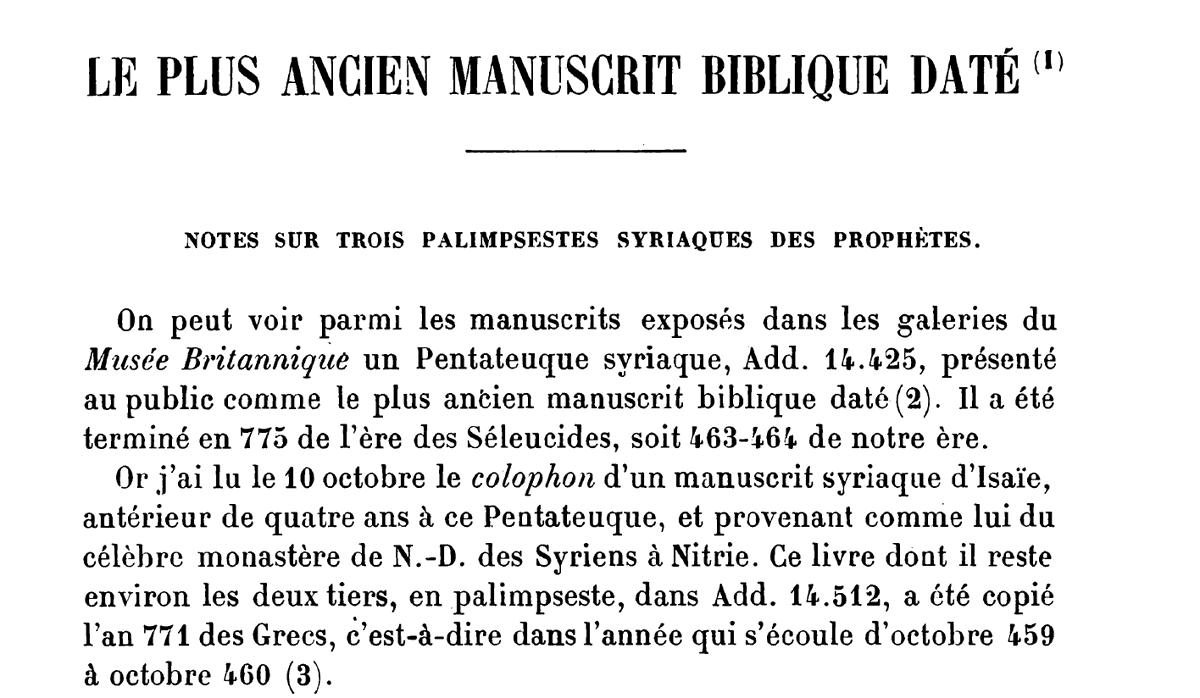Today’s #SyriacPalimpsestsMonday I would like to devote to the oldest dated #Biblical #manuscript in existence. Those familiar with the field of #Syriac studies, might think in this respect of the manuscript held in the British Library, Add. 14425.
Indeed, this manuscript was copied by a scribe called Yoḥannan in 775 of the Seleucid era corresponding to 463/4 CE. The manuscript contains the Pentateuch and was produced not in #Edessa (the central hub of the early Syriac Christianity), but in Amid (today’s Diyarbakır).
This manuscript is often mentioned as the oldest dated Biblical manuscript in existence. One often tends to neglect another Syriac biblical manuscript, which is slightly older. It is also kept at the British Library, as Add. 14512.
The reason for this negligence is the fact that it is a #palimpsest: the original Biblical manuscript was reused in the 10th for the production of the Syrian Orthodox liturgical book.
The manuscripts is damaged and many of its quires are lost. At presents it consists of 144 leaves and is a palimpsest throughout. Interestingly, according to William Wright, the scribe used three different manuscripts for a production of this liturgical volume:
1. a manuscript of the book of Isaiah; 2. a manuscript containing the discourses entitled “against the Jews”; 3. a manuscript of the possible containing the hymns of Jacob of Serugh.
All three manuscripts were dated by Wright on purely palaeographical grounds to the 6th–7th c. Catalogue description by William Wright: https://tinyurl.com/tlq648x ">https://tinyurl.com/tlq648x&q...
Somewhat later, in 1910, Eugène Tisserant, the future Cardinal of the Catholic Church and the head of the Vatican Library, had a chance to study the palimpsest de visu and was able to recognize and decipher the colophon of the undertext containing the book of Isaiah.
Most importantly, Tisserant read the year of its completion: 771 of the Seleucid era corresponding to 459/60 of the common era. Hence, this manuscript of the book of Isaiah was produced four years earlier than the Pentateuch manuscript mentioned above.
Remarkably enough, Tisserant was able to read most of the undertext and even prepared a collation. Later on, the palimpsest was used by Sebastian Brock in his critical edition of the book of Isaiah.
The article of Tisserant is now freely available at https://www.jstor.org/stable/pdf/44101256.pdf">https://www.jstor.org/stable/pd... thanks to @jstor.
All that makes the British Library, Add. 14512 a rare example of a palimpsest with the undertext that preserved a colophon and, even more importantly, the oldest dated Biblical manuscript that is known.
I will deal with other palimpsests that preserved the colophons in the future
I will deal with other palimpsests that preserved the colophons in the future

 Read on Twitter
Read on Twitter